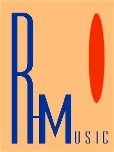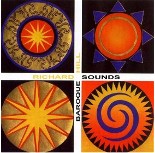Music
Creative
Home | Help | Contact Us | Useful Links | Terms of Use | MP3 Archive
Baroque Sounds Repertoire
By Richard Hill
BAROQUE SOUNDS
Album repertoire notes
TOCCATA & FUGUE IN D-MINOR - Johann Sebastian Bach 1685-1750 100 seconds MP3 sample (788k)
Written originally for the baroque organ, this piece is universally considered to be among the most sublime achievements of musical composition. Since the organ can be considered to be an ancestor of the music synthesizer, the Toccata and Fugue in D-minor is a natural choice to open the Baroque Sounds album. The word 'toccata' comes from the Italian 'toccare' - to touch - and signifies a piece in which the fingers travel at such a speed over the keys that they are merely touched rather than fully depressed. A toccata is a impressive 'show off' piece, often used as a prelude to a fugue, as in this case. The fugue itself is perhaps the most disciplined form of music ever conceived. Depending entirely on counterpoint as its essence, the word comes from the Italian 'fuga', meaning flight. It is this sense of chasing that characterises this unique musical form. Originally fugues were written for voices, but J S Bach raised this form to its highest achievement in this, perhaps the most famous of all organ pieces.
SONATA SECONDA PER TROMBETTA SOLA - Giovanni Bonaventura Viviani 1638-c.1690 100 seconds MP3 sample. (783k)
Little is known of Viviani's life and works. This rare sonata, probably written for St. Mark's in Venice, is perhaps one of the most beautiful minor works of the baroque. 'Trombetta' literally means little trumpet and the sonata, originally written to be accompanied by organ or harpsichord is here performed in more orchestrated form, using string derived sounds on the synthesizer as well as the solo trumpet. Such re-orchestrations were common in this period, when music depended less on colouration and more on content and availability of players. These 5 short movements give a fascinating insight into the superb inspirational quality of even the lesser-known baroque composers.
AIR ON THE G-STRING [from Suite No.3 in D] - J S Bach 75 seconds MP3 sample. (876k)
One of the most easily accessible and best loved of all J S Bach's compositions, the Air on the G-string is performed as often as not as a work in its own right, rather than as part of the suite. Hundreds of arrangements have been made of it and it remains an archetypal piece of music to this day. Richard Hill performs a futuristic version of the Air, with contemporary and imaginative synthesizer sounds being answered by conventional string orchestration.
MUSIC FOR HIS MAJESTY'S SACKBUTS & CORNETTS - Matthew Locke 1630-1677 81 seconds MP3 sound sample-647k
A friend of Samuel Pepys and Henry Purcell and 'Composer in Ordinary' to Charles II, Matthew Locke is one of England's lesser-known baroque composers. His music for sackbuts and cornets was written to celebrate the coronation of Charles II in 1661. The sackbut is a forerunner of the modern trombone and the cornett was an instrument with an ivory cup mouthpiece and finger holes instead of valves. The original alto part, the third voice, was lost from halfway through the 2nd of the 6 pieces, so Richard Hill created a new one in the style of the period. A combination of brass-like sounds are used to recreate the atmosphere of this rarely heard work, noticeable for its use of the contemporary and secular dance forms of the time.
BRANDENBURG CONCERTO NO.3 IN G [1st Mvt] - J S Bach 40 seconds MP3 sample. (473k)
A fascinating work, one of 6 concertos completed in 1721 for the Margrave Christian Ludwig of Brandenburg. It is not known if the concertos were ever performed during Bach's lifetime - the music remained part of a job lot until it turned up eventually in the Royal Library in Berlin. The work is interesting in the way it treats the string parts as single instruments in many places, unlike the large, lush sections of strings to which we are used today. This gives the piece a wonderful, earthy power, which illuminates the dynamism and energy of baroque music to the full.
SONATA VI PIAN'E FORTE a8 - Giovanni Gabrieli 1557-1612 100 seconds MP3 sample (793k)
A marvellously evocative piece, written for the echoing acoustics of St. Mark's Venice in 1597, at the very beginning of the emergence of the baroque style. Yet its use of antiphony, the call and response technique, which sounds so lovely in a cathedral setting, marks this work as almost a precursor of modern stereophonic sound. Here the music synthesizer has a chance to display its mastery of perspective in this musical dialogue between two brass choirs. A concept some 400 years old, recreated by today's computer technology.
CONCERTO FOR TWO VIOLINS IN D-MINOR [2nd Mvt] - J S Bach 100 seconds MP3 sample (792k)
Thought to have been written soon after his arrival in Leipzig, where J S Bach spent the last 30 years of his life, the slow movement of the Concerto for Two Violins in D-minor is one of those stunning jewels of composition which Bach, perhaps more than any other composer, seemed to be able to create with consummate ease. Its simple, scalic main theme is wonderfully transported through some startling and beautiful harmonic development and the two solo instruments create a magical dialogue with each other, which is unsurpassed by all but the greatest of classical compositions.
THE HORSES BRANLE 54 seconds MP3 sample. (663k)
Most baroque music owes its style and form to that of secular dance music. Throughout this period the branle, an earthy French dance, remained popular both in France and in England. At the courts of Louis XIV, Charles II and at many aristocratic balls, the branle was a much-indulged entertainment. The dance is of rustic origin and indeed is still performed today by folk bands at barn dances. We end BAROQUE SOUNDS by paying tribute to baroque folk music, with a rumbustious recreation of the sound and atmosphere of this venerable party piece.
Original Mandala design series 'Worlds Within Worlds' by Gabrielle Uncles.
Home | Help | Contact Us | Useful Links | Terms of Use | MP3 Archive
Copyright ©2023 Richard Hill. Site design by Paul Hill.

